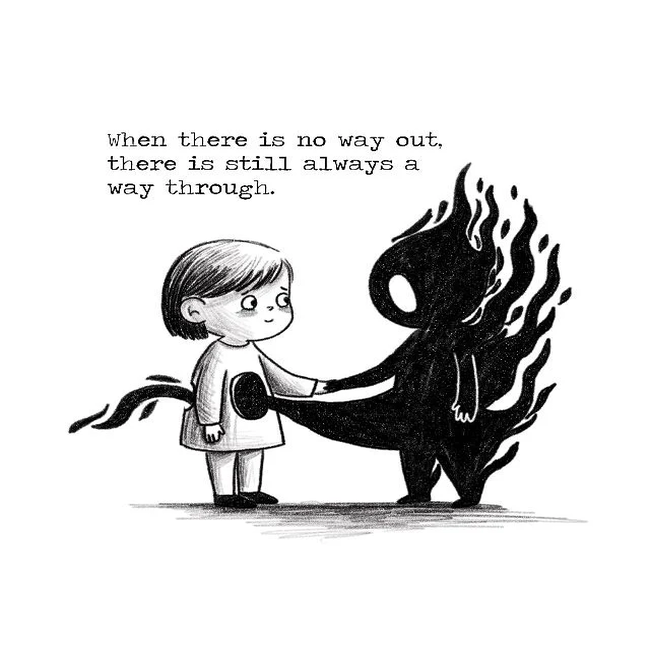The Strengths of the Silent Child, Stillness isnt absence
In every classroom, there is a child who sits quietly. The one who doesn’t volunteer answers. Who rarely raises his or her hand. Who doesn’t jump to be the group leader or rush to share personal stories in the morning assembly. To many teachers, parents and tutors, this child is instantly marked out, sometimes with concern, sometimes with impatience “Doesn’t talk”, “Very reserved,” “Lacks confidence” or the classic diagnostic shorthand… “Low participation". Silence, in most Indian classrooms, is still treated as a problem to be solved.
We live in a world with systems that places an enormous premium on verbal articulation. On confidence as something to be seen and heard. Children who speak up, perform, debate, joke, or simply speak often are treated as naturally bright, emotionally healthy, and socially well-adjusted. The others…the quiet ones become cases to monitor. Concerns to track. But here’s what we miss in that approach: not all silence is a symptom. Not all quietness needs intervention. Sometimes, silence is wisdom. Sometimes, silence is power.
The quiet child is not always shy. Or fearful. Or socially inept. Sometimes, he or she is simply deeply observant. Sensitive to nuance. Tuned in to unspoken dynamics., not mute to the world…just not loud about it. In fact, many such students are master processors. They take in more than they let on. They often understand the mood of the room before others do. They observe teacher-student interactions, the politics of group projects, the energy of the class, the unspoken emotions behind what peers say. They watch first and then think. This ability to pause before reacting is not a sign of slowness. It’s a cognitive strength one that enables layered comprehension, reflective analysis, and deep empathy. In a society obsessed with speed and visibility, it is this strength that often gets pathologised.
In school psychology reports or teacher observations, silence is often grouped with low self-esteem, social withdrawal, or even emotional distress. Yes, in some cases, silence is indeed a retreat. A defence against anxiety. A result of trauma. But not always. Many students are quiet not because they feel less than others but because they feel no compulsion to perform. Their silence is rooted in self-respect. In discernment. In an internal compass that values substance over noise.
Some students even as young as twelve or thirteen intuitively understand that not every space is emotionally safe, not every conversation deserves their truth, and not every teacher-student interaction is worth entering performatively. This is not fear. This is diplomacy.
One of the paradoxes of the quiet child is that while he or she is often invisible in classroom dynamics, yet can sometimes be the deepest thinker in the room. In one-on-one interactions, many such students reveal an extraordinary grasp of lesson plans, thematic depth, and emotional insight. When asked privately, they can often articulate ideas with clarity and creativity. They are not non-participants. They are selective participants. In Indian classrooms, where standardised assessments and verbal participation are used as easy metrics of engagement, the brilliance of these students often goes unnoticed. Their contributions live in margins. In footnotes. In doodles at the edge of notebooks. In the few sentences they do choose to speak often profound, often overlooked.
Our culture in education and beyond often mistakes performance for participation. We overvalue expression and undervalue introspection. In teacher trainings, there is still little focus on listening to the listener, on understanding different communication styles, or on recognising internal forms of engagement. We’ve created classrooms that reward spontaneity over thoughtfulness, extroversion over quiet confidence, speed over depth. And so, we lose out. Because the quiet child if given the right environment can become the philosopher, the peacemaker, the creative, the analyst, the listener, the one who sees what others miss.
Participation is not only verbal. It’s also silent attention. Internal processing. Quiet emotional labour. The student who listens with care, who chooses their words slowly, who doesn’t interrupt is also participating. What if we trained ourselves to notice that? If we keep measuring fish by how well they climb trees, we’ll keep misunderstanding brilliance. In a noisy world, silence is not failure. It is not void. It is language. It is energy. For many children, it is a shield they’ve built not out of weakness, but strength. They are not just the quiet ones. They are the ones who watch, wait, wonder, and listen deeply and we would do well to meet them there.
Ms. Meghna Joshi,
Psychodynamic Counsellor
The Indian School















